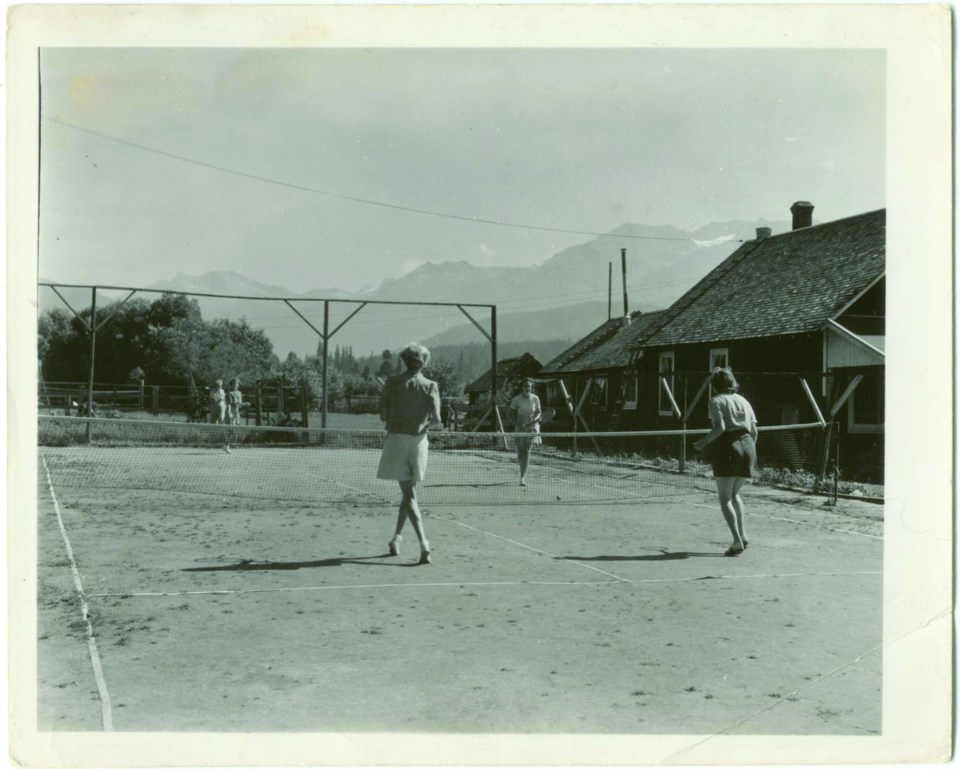One of the first things folks learn about Whistler is its incorporation as part of a long-term bid to land the Winter Olympics.
Shortly after, someone will chime in with the ‘But did you know it actually started as a summer resort for fishing?’ trivia.
But what’s perhaps gotten lost in the mix is tennis’ place in the resort, especially as it was only recently discovered how long that history actually stretches back.
Whistler Museum executive director Brad Nichols says a member of the Whistler Tennis Association had reached out to discover more information about the history of tennis in the resort, but he uncovered more than he was expecting.
“I went through our collection and started to look through all our photographs that we had regarding tennis,” he says. “I had known that there had been tennis at Rainbow Lodge (one of the early fishing resorts), so going through that, we found the earliest dated photo of the courts was from 1918.”
That photo, as well as other artefacts depicting the sport’s history in Whistler, will be part of the Whistler Museum’s new exhibit “Whistler Tennis: 100 Years 1918-2018.” The exhibit will launch with a reception on Friday, Sept. 28. Doors open at 6:30 p.m. while the presentation will start at 7 p.m.
John Konig of the Whistler Tennis Association explains there are distinct sections of the sport’s history in town, which the exhibit details. “There are three main eras of tennis,” Konig says. “There’s the lodge, which is obviously the very beginning. Then the other major part was the Whistler Valley Tennis Club (WVTC), which was on the shores of Nita Lake. That’s going to be a big part of it.”
Konig adds the WVTC was a non-profit organization that leased the courts from builder John Taylor. The organization hired a pro and boasted membership of roughly 250 players.
The third and final era is the current one, built nearly 30 years ago in Whistler Village as what was supposed to be a temporary venue. Plans for a state-of-the-art site fell through and the club has remained there to this day.
Konig also notes Whistler legends Nancy Greene and Al Raine built one of the first private courts in the resort, which saw many prominent local players come through. Konig adds the Delta and Fairmont Chateau Whistler had courts, with the latter hosting events on one of the world’s top tours, which was sponsored by Smirnoff vodka.
Nichols sees a correlation between the resort’s development and the sport’s emergence, starting with the Rainbow courts catering to tourists during one of tennis’ peaks, and continuing from there.
“It feels like the original tennis association that grew in the 1970s was very community-based and had a very small feel to it. It’s probably how Whistler around that time felt very small and very community-oriented,” he says. “When they started to market Whistler more, tennis was starting to be marketed more toward the people travelling here.”
Nichols says as a result of hosting the exhibit, he’s been inspired to get more oral histories of tennis from community members in order to catalogue them for the archives for further research in the future.
For more information, visit whistlermuseum.org.




